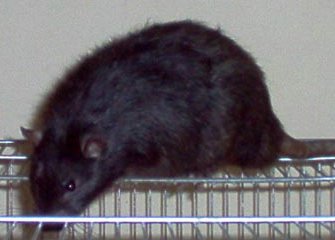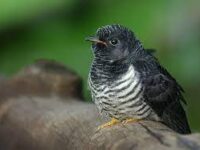The spread of the black rat (Rattus rattus) across the globe has been inextricably linked to the spread of human civilization from as early as 2000 BCE. They’ve easily survived worldwide expansion due to their skills in cohabiting with humans and taking advantage of our gathered food and resources. From raiding pantries to spreading devastating diseases, black rats have long impacted human society and behaviors. As technology progresses, we continue to look for new ways to eradicate these furry pests. However, rat eradication might not only be beneficial to our terrestrial civilizations but also to marine communities.
“Rat eradication might not only be beneficial to our terrestrial civilizations, but also to marine communities.”
Black rats have managed to infest even the most remote islands such as those in the Chagos Archipelago, which is 500 km south of the Maldives. In a recent ecological study that took place on ten islands within this archipelago, Sally Keith and a team of marine researchers observed a concerning effect of these rat infestations on the behavior of herbivorous farmer damselfish, Plectroglyphidodon lacrymatus. These fish inhabit coral reefs off the shores of tropical islands which are densely populated by seabirds. The birds feed in the open ocean and return to the islands, depositing nitrogen-rich droppings that accumulate to form guano. When the guano is washed into the ocean by the tides, the nitrogen is deposited onto the algae that cover the reefs. These nitrogen-rich algal covers provide a high-nutrient diet for P. lacrymatus.
However, near rat-infested islands, the conditions are quite different. The black rat’s predation of seabirds disrupts a crucial step in this marine food chain. With fewer seabirds, there is less nitrogen-rich runoff into the algae, which decreases the amount of nutrients available for damselfish to feed on in their small territories. Keith and her team found that the territory sizes of damselfish impacted by rat infestation were larger than those whose food supply was undisturbed. When a region is high in nutrients, damselfish don’t have to travel far to meet their energetic demands. However, as the quality of nutrients declines due to the decrease in nitrogen, many P. lacrymatus have to travel farther than usual for sufficient nutrients. The decline in resources is also detrimental to damselfish growth rates, which can impact the role they play in their marine ecosystem.
“The black rats’s predation of seabirds disrupts a crucial step in this marine food chain.”
While the nutritional disruption caused by black rats directly affects P. lacrymatus physically, there are also behavioral effects. The change in territory size corresponded with a significant change in damselfish behavior. Damselfish are known for aggressively defending their small feeding territories. They are quick to spend energy protecting their boundaries and were observed swimming rapidly toward other fish, butting into them, and even going as far as to bite their unfortunate trespassers. In smaller territories with high nutrient quality and concentration, there is a greater benefit in aggressive territory defense compared to being passive. The energetic cost of confronting other fish is quickly overcome by the ease of feeding. With rat infestation causing a decline in nutrient availability, these aggressive behaviors are no longer observed. The energy spent protecting their now larger territories from invading fish is no longer offset by foraging. The nutrient benefits do not outweigh the energetic cost of confronting other fish. The territorial aggression of P. lacrymatus plays an important role in the organization of coral reef communities. When each damselfish defends its territory, it affects the spatial and social organization of all other species of fish that cohabitate the reef. This ecosystem organization is essential for the functionality of the reef.
“While the nutritional disruption caused by black rats directly affects P. lacrymatus physically, there are also behavioral effects.”
Overall, the black rat’s predation of seabirds has extremely detrimental effects on these delicate ecosystems. Seabirds are crucial contributors to the marine food chain, increasing coral and fish growth rates and enhancing marine biodiversity through nitrogen deposits. When these bird populations are decimated, the negative downstream impacts can be seen in marine life behavior, reef fish ecosystem organization and population, and the overall resilience of the ecosystem. As rat eradication efforts increase on land, we have a chance to support our marine communities and restore balance in cross-ecosystem interactions.






